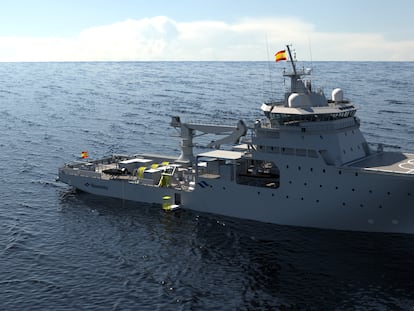Four mathematicians demonstrate it is impossible to predict where 29,000 rubber ducks in the sea will wash up
Spanish research has provided insight into the Navier-Stokes equations governing the behavior of fluids
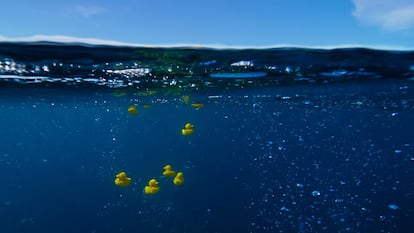
On January 10, 1992, the sea was awash with yellow ducks, blue tortoises, green frogs and red beavers. A container filled with 29,000 bath toys had fallen off a ship during a violent storm in the North Pacific, almost exactly halfway between Asia and America. Seven months later, hundreds of the rubber toys were deposited on the coast of Sitka, Alaska, not far away from where some 61,000 Nike sneakers had washed up after a similar accident at sea two years earlier. It then occurred to American oceanographer Curtis Ebbesmeyer that these drifting objects could be studied over a number of years to predict ocean currents.
Four Spanish mathematicians, setting their minds to another monumental challenge, have now as a result solved the enigma of the Pacific rubber ducks: it was impossible to accurately predict where they might wash up. It seems like a bit of fun but the study was published in the respected scientific journal PNAS due to its potential implications for humanity.
The Clay Mathematics Institute announced in 2000 that it would offer a $1 million prize to anybody who could solve any of the seven “Millennium Problems,” a set of devilishly complicated mathematical puzzles constituting the most important open problems in mathematics. One of these concerns the Navier-Stokes equations, which describe the movement of liquids and gases. They were formulated between 1821 and 1845 by French mathematician Claude-Louis Navier and Irish physicist George Stokes. Taking into account factors such as temperature, viscosity and the initial velocity of a fluid, the Navier–Stokes existence and smoothness problem calculated its projected speed at a point of time in the future. Almost 200 years after it was first posited, it remains unknown whether the answer to this formula produces accurate results with a certain level of regularity or if they can produce a blow-up, a sudden alteration in behavior. Finding out is worth a million dollars.
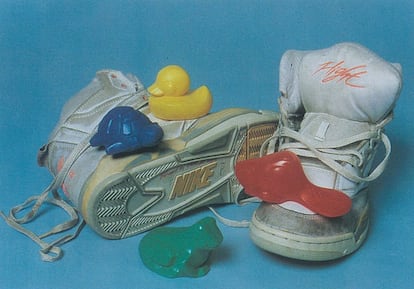
Mathematician Eva Miranda recounts how she was traveling from Madrid to Barcelona by train one day in February 2019 and, idly going through Twitter, she learned that Australian researcher Terence Tao had published the latest details of his mission to solve this problem on his blog. Tao was a child prodigy in the mathematics world. At the age of 16 he earned his bachelor’s and master’s degrees from Flinders University and by the time he was 21 he had received his PhD from Princeton University. At the age of 31 he was awarded the Fields Medal, one of the most prestigious awards in mathematics. Now, at 45, he is known as the “Mozart of mathematics.”
In 2014, Tao announced that he intended to address the Navier-Stokes existence and smoothness problem by abstractly simulating a kind of computer made out of water, which would force the liquid to accumulate energy up to the point where a sudden change in the Navier-Stokes equations could be detected. Miranda, a professor at the Polytechnic University of Catalonia, had a brainwave on the train and called three colleagues to propose an idea.
The four mathematicians – Miranda, Robert Cardona, Daniel Peralta and Francisco Presas – announced on May 5 that they had managed to design an abstract hydrodynamic machine for the first time. The researchers based their work on a Turing machine, a mathematical model of computation that defines an abstract machine that manipulates symbols on a strip of tape according to a table of rules. The machine designed by the four Spanish researchers takes a point in space as input and offers up as a result the point to which the liquid has moved.
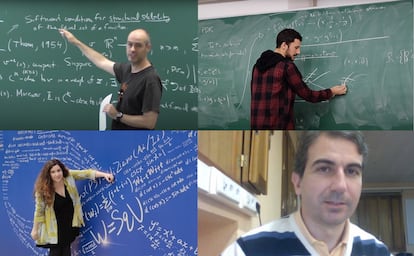
Miranda explains that the machine provides evidence that the turbulent behavior of fluids is an “indefinable” problem: the mathematics fall short of being able to resolve the problem. It is not that mathematicians are missing something and it has nothing to do with the famous unpredictability of Chaos Theory (the idea that the flap of a butterfly’s wing can generate a tornado), it is simply that no algorithm exists to definitively prove that a fluid passes through a certain point in a given time. “We are the first to demonstrate that you cannot predict where the rubber ducks will go, supposing that they move in three dimensions. It is as if I throw a message in a bottle into the sea. It will follow a trajectory and after a period of time it will wind up somewhere else. What we have demonstrated is that we cannot predict where it will end up, so it’s better to send a WhatsApp instead,” jokes Miranda.
Some of the toys from the 1992 accident washed up years or even decades later on coastlines across half the world, as the BBC documentary Blue Planet II showed. Some made it to Alaska, some to Australia, others to Japan and some even crossed the Arctic and passed through the Pacific Ocean to the Atlantic. Miranda recalls that shortly before the container hit the waves, American physicist Cristopher Moore had already asked if fluids are sufficiently complex to perform all the possible operations of a computer. “We demonstrated that they are,” Miranda says.
Tao has applauded the work of the Spanish mathematicians. “More than the solution, it is evidence of the difficulty of the problem,” he tells EL PAÍS. The new hydrodynamic machine is not applied to the three-dimensional space in which we live, but to a simplified curved version of it, Tao explains. “But it does show that fluids can become sufficiently complex in these curved spaces that, to an extent, they can behave like a computer in such a way that you can program a fluid to do anything that you can program a computer to do,” adds the University of California professor. “I believe that the same type of phenomenon also occurs in our flat, three-dimensional world, which rules out many ways of approaching the solution to the problem of regularity in the Navier-Stokes equations, which are based on showing that fluids conform in certain simple ways.”
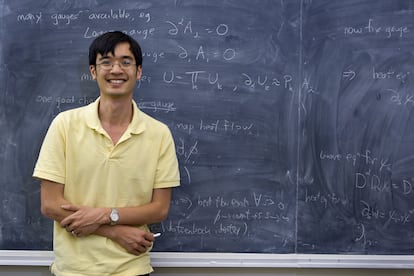
Tao’s hypothesis on the Navier-Stokes equations is that they will not display a global regularity, but instead will “blow up.” This does not mean that a tsunami will suddenly appear in an ocean in the real world, but rather that in certain conditions these equations are not sufficient to describe the complexity of fluids. Miranda compares the trajectory of a fluid particle with the stroke of a pencil on paper. “Blow-up would be if someone hits you with their elbow and this causes you to move the pencil. In the drawing you would notice a discontinuity, a very out-of-place behavior, as if it went to infinity,” explains the mathematician.
Miranda believes that if the Navier-Stokes equations were to blow up it would be “a genuine revolution,” because it would imply that mathematical models for predicting atmospheric weather conditions, rising sea levels and the behavior of other essential viscous fluids – such as human blood and petroleum - are imprecise.
The machine designed by Miranda and her colleagues does not employ the Navier-Stokes equations but a previous version formulated in 1755 by Swiss mathematician Leonhard Euler that describes the movement of ideal fluids with zero viscosity. The results that the machine produced do not show any sudden jumps. “Our investigation doesn’t serve to demonstrate the blow-up of the Navier-Stokes equations,” says Miranda.
English version by Rob Train.
Tu suscripción se está usando en otro dispositivo
¿Quieres añadir otro usuario a tu suscripción?
Si continúas leyendo en este dispositivo, no se podrá leer en el otro.
FlechaTu suscripción se está usando en otro dispositivo y solo puedes acceder a EL PAÍS desde un dispositivo a la vez.
Si quieres compartir tu cuenta, cambia tu suscripción a la modalidad Premium, así podrás añadir otro usuario. Cada uno accederá con su propia cuenta de email, lo que os permitirá personalizar vuestra experiencia en EL PAÍS.
¿Tienes una suscripción de empresa? Accede aquí para contratar más cuentas.
En el caso de no saber quién está usando tu cuenta, te recomendamos cambiar tu contraseña aquí.
Si decides continuar compartiendo tu cuenta, este mensaje se mostrará en tu dispositivo y en el de la otra persona que está usando tu cuenta de forma indefinida, afectando a tu experiencia de lectura. Puedes consultar aquí los términos y condiciones de la suscripción digital.
More information
Archived In
Últimas noticias
ICE raids trigger school absenteeism and traumatize children: ‘They have been forced to leave their childhood behind’
Mexico’s missing people crisis casts a shadow over World Cup venue
Can cheese protect brain health? This is what the science says
Maude Apatow, from acting in ‘Euphoria’ to directing: ‘There are many films that you can tell weren’t written by someone young’
Most viewed
- Christian Louboutin: ‘Young people don’t want to be like their parents. And if their parents wear sneakers, they’re going to look for something else’
- US sanctions against jailed cartel leader ‘El Marro’ highlight Mexico’s lack of control over its prisons
- Cartels in Mexico take a leap forward with narco-drones: ‘It is criminal groups that are leading the innovation race’
- Liset Menéndez de la Prida, neuroscientist: ‘It’s not normal to constantly seek pleasure; it’s important to be bored, to be calm’
- ‘El Limones’ and the growing union disguise of Mexican organized crime


